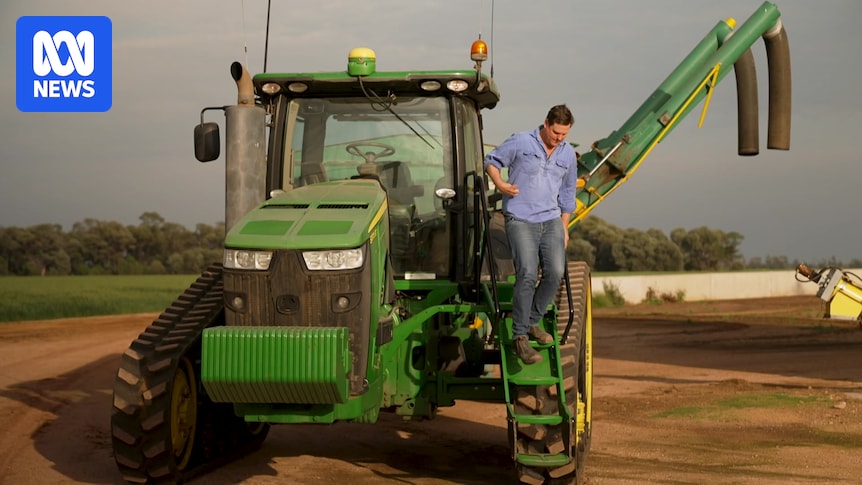Comparatively strong prices and new heat tolerant varieties have encouraged Queensland farmers to expand into growing canola.
The oilseed, used to produce cooking oil and biofuels, is predominantly grown in southern states, where dry conditions have impacted plantings and yields.
But along the New South Wales/Queensland border, farmers like Nigel Corish are harvesting their first trial crops, and have been impressed with the results.
“I think we got $690 per tonne delivered to Boggabilla (NSW), which is about 200 kilometres south,” he said.
“It’s quite reasonable, given where the other commodity prices are.”
Nigel Corish farms on Queensland’s Western Downs. (ABC Landline)
Mr Corish said a 60-hectare trial crop on his property at Condamine, 330 kilometres west of Brisbane, was a success — yielding 1.5 tonnes per hectare — even though there was nowhere in Queensland to process the grain.
He said he planned to grow more next season, adding to his rotation for the lighter, gravelly, Western Downs soil that was unsuitable for other crops.
“I can see canola taking up around that 15 to 20 per cent of the area, particularly on poor soil type areas,” he said.
“Particularly those soil types that aren’t suitable for sorghum or dry land cotton when it does get hot during our summer.
“It helps with some soil disease and sort of changes the soil structure a little bit.”
For most of the season, growers could sell their canola for more than $700 per tonne — hundreds of dollars higher than other winter crops.
Mr Corish said canola’s improved profitability added to its appeal as a rotation crop.
“The price of canola actually factors into the gross margin of the [entire] cropping system,” he said.
He said at least four other growers in his region intended to trial canola for the first time next season.
Canola prices have been stronger than other commodities this growing season. (ABC Rural: Jane McNaughton)
Why canola?
Independent Commodity Management market advisor Matthew Leeson said the canola market was a strong performer when compared to other broadacre crops grown in Queensland such as wheat and barley.
He said demand in the export market and seasonal conditions had boosted production in Queensland.
“We’ve seen an increase in demand globally, which has supported prices domestically,” he said.
“Production really hasn’t kept up with that.”
He said global market volatility was also a factor.
“We’ve also got a trade spat between Canada and China at the moment, which is limiting the canola that Canada can ship,” he said.
“That’s moved demand to Australia.”
According to the Australian Bureau of Statistics, Australian farmers planted 3.7 million hectares of canola in 2023-24, mostly in Western Australia, New South Wales, Victoria and South Australia.
Queensland, by comparison, grew a total area of 7,036 hectares, but Mr Leeson said new varieties meant there was even more opportunity for that to grow.
“If we can get some more malleable varieties that can handle a warmer spring and the prices hold up, then it certainly does have a part in our rotation,” he said.

